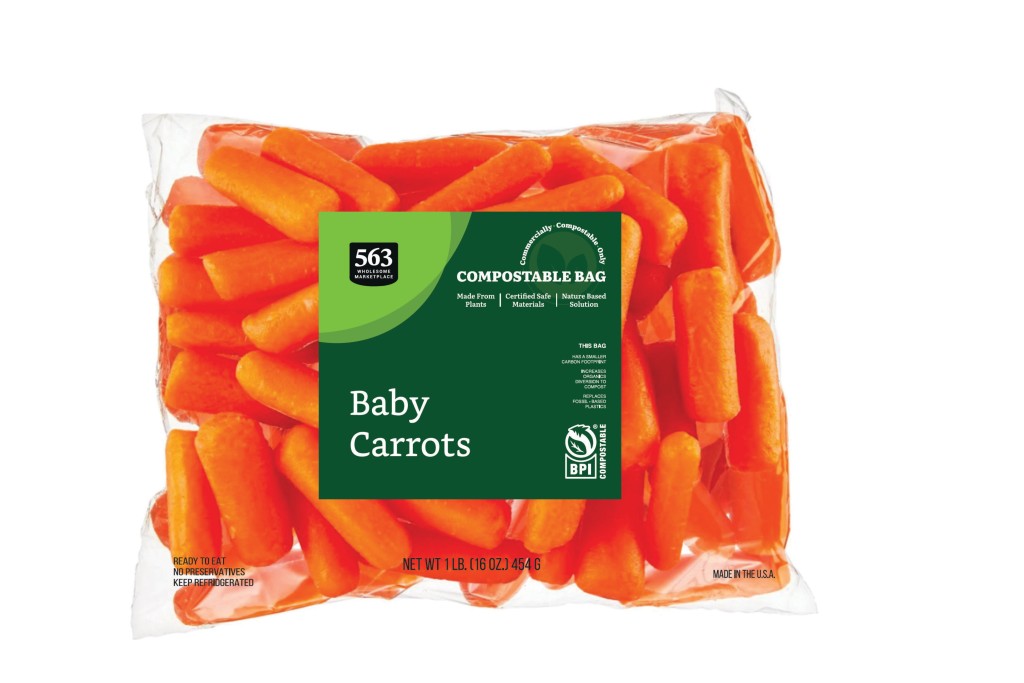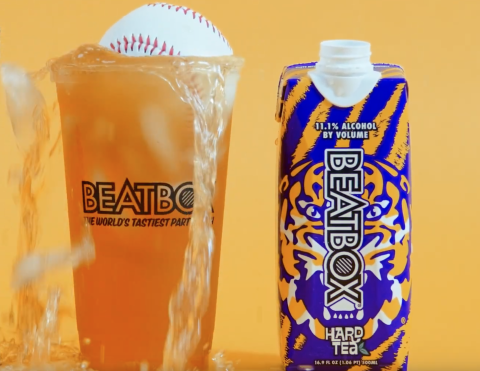By Max Senechal, Chief Commercial Officer, CJ Biomaterials
Approximately six hundred million tons of food packaging waste were generated in 2022, and much of that waste was comprised of plastic.1 The plastic waste issue and the environmental and health dangers it presents are well documented. Plastic breaks down into microplastics, and these can enter the body through ingestion, inhalation, or other routes. To underscore the extent of the problem, a study conducted by Toxicological Sciences to determine if microplastics are in placentas found that they were present in all sixty-two placentas that were tested, illustrating the pervasive nature of these pollutants.2
There is now a promising solution available that can help make food and beverage packaging and serviceware more sustainable and reduce its impact on the environment: polyhydroxyalkanoate (PHA) biopolymers.
The Key Benefits of PHA in Food Packaging and Serviceware
PHA is a biobased, biodegradable polymer that can be composted in a variety of environments, making it an attractive alternative for companies seeking to minimize their environmental footprint. Derived from nature, and produced sustainably, PHA can be used as building blocks to replace and improve the functional characteristics of a broad range of polymers that are used to develop food packaging and serviceware items that are on the market today. The renewable raw materials used to create PHA are sugars sourced from plants like sugar cane, tapioca, corn, and cellulosic biomass, amongst others. They are produced through aerobic fermentation, converting these renewable raw materials into PHA polymers directly inside microbial bio-factories.
There are potentially hundreds of PHA variations that can be produced, but in terms of basic properties, today there are two forms of PHA that can and are being used to make plastic food packaging and serviceware more ecofriendly. There is a soft, rubbery form of the material that works well as a modifier to other polymers and biopolymers (such as polylactic acid, or PLA, and other PHA) by increasing the bio-based content of finished packaging to accelerate biodegradation and improve its functional properties, including structure, durability and flexibility. Right now, these are being used to create biodegradable, compostable food packaging film. PHA is also available in a more rigid version that is strong enough to be used on its own to create articles such as cutlery, drinking straws, and other end products.
Responding to Consumer Demand for Sustainable Packaging
Eighty-six percent of consumers are more likely to purchase a product from a brand or retailer if the packaging is considered sustainable3, and the end-of-life advantages are what is driving interest in PHA from the food and beverage industry. PHAs ensure that plastic products break down naturally in various environments, positioning PHA as a key material in the shift towards more sustainable packaging solutions. However, when considering which PHA to use, it’s important to find options that are certified to meet industry standards for safety and environmental impact. Meeting certification standards is critical for both the resin and the actual final article.
TÜV based in Austria, and BPI based in the USA, are examples of organizations that verify and provide certification that a product is compostable and/or biodegradable under a variety of conditions. When PHA is used for food packaging it is typically required to be certified for home and industrial compostability, and sometimes marine and soil biodegradability. The home and marine–typically the most stringent certifications to obtain—are increasingly becoming required standards by brands and retailers. Industrial compostability, where the waste products must make their way through an established industrial infrastructure, is also a key certification requirement for biopolymers, including PHA, but has been hampered by a lack of developed infrastructure required to support the recovery and processing of the waste.
To be a useful packaging material, the PHA selected should also be included on the U.S. Food and Drug Administration Inventory of Effective Food Contact Substances. This verifies that the material is safe to come into contact with food, and approves it for use in the packaging for all food sold in the U.S.
Regulatory Impact: SB 54 and Beyond
These certifications are becoming increasingly important with the introduction of legislation, such as California’s SB 54. The Bill requires that single-use plastics be either recyclable or compostable, pushing companies to explore alternatives like PHA. The challenges of recycling, especially with flexible packaging, make compostability an attractive option, and PHA’s ability to meet industrial compostability standards positions it well in this regulatory landscape.
Another relevant piece of legislation is California’s SB 1383, which focuses on reducing food waste in landfills to cut down on methane emissions, a potent greenhouse gas. PHA can play a role here by being used to create compostable bin liners, which are essential for facilitating the composting of food waste. As the infrastructure for industrial composting expands, PHA and similar biopolymers will be critical in meeting the goals set by these regulations.
Applications of PHA in Food Packaging
PHA is already being used in a variety of food packaging applications, with rigid and flexible packaging leading the way. Rigid packaging, such as clamshells used for roasted chickens or clear covers for plastic tubs, is an area where PHA-based materials can be thermoformed at high temperatures to create durable, compostable containers. Flexible packaging, particularly in food applications, is another area where PHA is increasingly being used, often in combination with other biopolymers such as PLA, to create compostable films that offer a viable alternative to traditional plastics.
Established players and emerging startups specializing in home compostable cutlery are commercializing new products using PHA as the main component and responding to the demands of their customers for more sustainable products. Their cutlery is certified compostable and demonstrates PHA’s potential in this market. Similarly, other organizations are using PHA to develop marine biodegradable straws, demonstrating PHA’s versatility and effectiveness in meeting the highest environmental standards.
A Look Ahead
The market for PHA-based food packaging and serviceware is experiencing dynamic growth, driven by both regulatory pressures and increasing consumer demand for sustainable products. More importantly, brands are beginning to recognize the importance of addressing sustainability concerns and are turning to materials like PHA to enhance their environmental profiles. As consumers become more environmentally conscious, they are demanding the companies making the products they buy use packaging that aligns with their values.
The broader adoption of PHA technology in the food packaging industry faces challenges, primarily related to cost and scalability. The production of PHA is currently more expensive than traditional plastics, and there is a need for continued technological advancements to improve the economics of production. Regulation will also continue to play a critical role in leveling the playing field by internalizing the environmental costs of traditional plastics, which are not reflected in today’s market price. As these challenges are addressed, the potential for PHA to become a more widely used material in food packaging and serviceware will grow.
1Marsh, Jane, ”Food Packaging Waste Statistics: Understanding the Rise of Food Packaging Waste,” Environment.co, 3 May 2021, updated 20 May 2024, https://environment.co/food-packaging-waste-statistics-understanding-the-rise-of-food-packaging-waste/#:~:text=In%202022%2C%20the%20planet%20generated,increasing%20waste%20generation%20per%20home. Accessed 12 Aug 2024
2McMahon, Katherine, “New Study Finds Microplastics in All Human Placentas Tested,” Environmental Health News, Environmental Health Sciences, 29 Feb 2024, https://www.ehn.org/microplastics-found-in-placentas-2667389941.html?gad_source=1&gclid=Cj0KCQjw5ea1BhC6ARIsAEOG5pzv4gf9tV5VUwkU9pWn0cRmTsjfJr43FE-rALbGDWQcftacJ2lwDHoaAuOHEALw_wcB Accessed 12 Aug 2024
3”The 2022 Sustainable packaging Consumer Report,” Shorr, 20 July 2022, https://www.shorr.com/resources/blog/the-2022-sustainable-packaging-consumer-report/#:~:text=In%20fact%2C%2086%25%20of%20the,products%20in%20the%20near%20future., Accessed 12 Aug 2024








